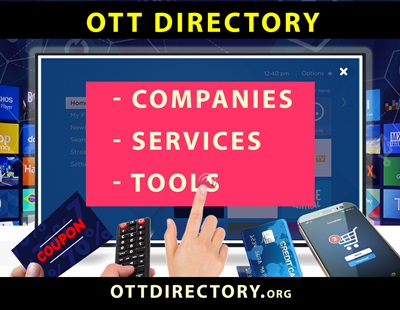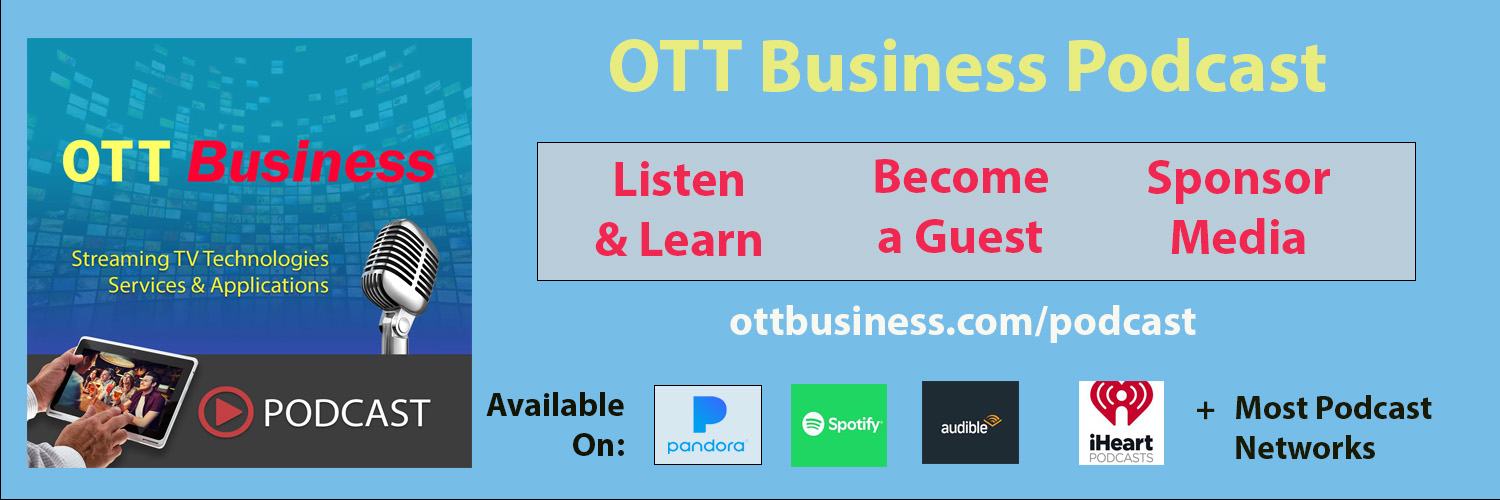Content Moderation Tools
 CContent moderation tools manage the review, categorization, management, authorization and publishing of user-generated content. OTT platforms often struggle with managing vast amounts of user-generated content while ensuring it adheres to community guidelines and legal standards. Content management platforms and tools address key issues such as inappropriate content, regulatory compliance, and efficient workflow management. These tools feature automated filtering and detection using AI and machine learning to swiftly remove harmful content, real-time moderation to oversee live broadcasts, and customizable moderation rules to fit specific community needs. They also offer multilingual support, robust data privacy and security measures, and advanced analytics and reporting for monitoring and improving moderation activities. By providing a suite of moderation features, these platforms help maintain a safe, compliant, and engaging environment for users, making it crucial for OTT service providers to explore and implement these tools.
CContent moderation tools manage the review, categorization, management, authorization and publishing of user-generated content. OTT platforms often struggle with managing vast amounts of user-generated content while ensuring it adheres to community guidelines and legal standards. Content management platforms and tools address key issues such as inappropriate content, regulatory compliance, and efficient workflow management. These tools feature automated filtering and detection using AI and machine learning to swiftly remove harmful content, real-time moderation to oversee live broadcasts, and customizable moderation rules to fit specific community needs. They also offer multilingual support, robust data privacy and security measures, and advanced analytics and reporting for monitoring and improving moderation activities. By providing a suite of moderation features, these platforms help maintain a safe, compliant, and engaging environment for users, making it crucial for OTT service providers to explore and implement these tools.
Content Moderation Platforms and Tools
Accenture – Accenture offers comprehensive content moderation services leveraging advanced technologies and trained moderators.
Alibaba Cloud – Alibaba Cloud provides scalable cloud storage, media processing, and CDN services, focusing on high performance and global reach.
Alorica – Alorica offers content moderation services with a strong recruitment model to hire the best moderators.
Backscreen – Backscreen provides advanced content moderation and video review tools that help media companies to gather and manage user-generated content.
Concentrix – Concentrix provides a range of moderation services focusing on maintaining safe and respectful online communities.
Digital Goliath Marketing – Digital Goliath specializes in innovative content creation and comprehensive moderation services.
Hive Moderation – Hive provides automated content moderation with human-level accuracy, processing various media types and providing real-time tagged metadata.
LiveWorld – LiveWorld provides content moderation services combining software and human oversight to ensure nuanced and effective moderation.
Mobius Labs – Mobius Labs provides AI-powered video moderation with rapid processing speeds and extensive tag customization.
Netino – Netino offers omnichannel moderation combining AI and human verification to manage content across text, images, and videos.
Pubnub – Pubnub provides a real-time communication platform that enables OTT and Streaming TV services to deliver live updates, in-app chat, and interactive experiences across multiple devices and platforms.
Respondology – Respondology provides real-time moderation across social media platforms, using customizable keyword and emoji filtering.
Sightengine – Sightengine offers automated content moderation for images, videos, and text to detect and filter inappropriate content.
TaskUs – TaskUs provides trust and safety digital solutions with expert human moderators supported by advanced behavioral research and technologies.
Teleperformance – Teleperformance combines human expertise and AI to deliver content moderation services that ensure safe online interactions.
Telus International – Telus International offers social media community management and content moderation services with a strong focus on employee welfare.
Utopia Analytics – Utopia Analytics offers AI-driven content moderation that understands multiple languages and semantic meanings.
WebPurify – WebPurify moderates user-generated text, images, and videos in real time to ensure a safe online environment.
Wipro – Wipro provides content moderation solutions using a blend of AI and human intelligence to ensure unbiased and efficient content review.
Content Moderation Platforms and Tools Key Features
Analytics and Reporting
Comprehensive analytics and reporting tools are essential for monitoring moderation activities, identifying trends, and measuring the effectiveness of moderation efforts. These tools provide insights into the performance of the moderation process, helping to make data-driven decisions and improve overall content management.
Audit Trails
Detailed logs and audit trails of all moderation activities are crucial for accountability and transparency. They provide a record of actions taken by moderators, which is essential for reviewing and verifying the moderation process, and ensuring compliance with internal policies and external regulations.
Automated Filtering and Detection
The ability to automatically detect and filter out inappropriate, harmful, or offensive content using AI and machine learning algorithms is vital. This feature helps maintain a safe and respectful environment by quickly identifying and removing problematic content, reducing the burden on human moderators.
Community Management Tools
Features to foster and manage community engagement, including user interactions and discussions, are important. They help build a positive community atmosphere, encourage user participation, and support the enforcement of community guidelines.
Compliance Tracking
Features that track and ensure compliance with regional and international laws, such as GDPR, COPPA, and others, are critical. These tools help platforms adhere to legal requirements, avoid penalties, and protect user rights by ensuring that content moderation practices meet regulatory standards.
Content Categorization
Tools that automatically categorize content based on predefined criteria streamline the moderation process. Efficient categorization helps moderators quickly identify and review specific types of content, improving the speed and accuracy of the moderation workflow.
Content Escalation
Processes to escalate complex moderation cases to higher authorities or more experienced moderators are necessary. This feature ensures that difficult or sensitive issues are handled appropriately, maintaining the integrity and fairness of the moderation process.
Customizable Moderation Rules
The ability to set and adjust moderation rules and guidelines to fit specific community standards and legal requirements is essential. Customizable rules allow platforms to tailor their moderation efforts to their unique needs, ensuring relevance and effectiveness.
Data Privacy and Security
Strong data privacy and security measures are crucial to protect user data and maintain the integrity of the moderation process. Ensuring that sensitive information is secure helps build user trust and complies with privacy regulations.
Image and Video Moderation
Advanced tools for the moderation of multimedia content, including images and videos, are necessary to ensure comprehensive content review. This feature helps identify and remove inappropriate visual content, maintaining a safe viewing experience for users.
Integration with Existing Systems
Compatibility with existing content management systems (CMS) and workflows ensures seamless integration and operation. This feature allows platforms to incorporate moderation tools into their current setup without disruption, improving efficiency and consistency.
Machine Learning Updates
Regular updates and improvements to machine learning models enhance the accuracy and effectiveness of automated moderation. Keeping these models up-to-date ensures that the system can effectively handle new types of content and evolving moderation challenges.
Manual Review Tools
Interfaces and tools for human moderators to review flagged content provide a balance between automated and human moderation. Human review is crucial for nuanced decisions that automated systems might not handle well, ensuring fair and accurate moderation.
Multilingual Support
Capabilities to moderate content in multiple languages ensure comprehensive review across diverse user bases. This feature is important for platforms with a global audience, allowing them to effectively manage content in various languages.
Multi-Platform Support
Compatibility with various platforms and devices, including mobile, web, and connected TVs, ensures consistent moderation across all user touchpoints. This feature helps maintain a uniform moderation standard, regardless of how users access the content.
Real-time Moderation
Tools that provide instant review and moderation of live content are vital to prevent the broadcast of inappropriate material. Real-time moderation helps manage live streams and other immediate content, ensuring it adheres to community guidelines and legal standards.
Scalability
The platform’s ability to handle increasing volumes of content without compromising performance or accuracy is essential. Scalability ensures that the moderation system can grow with the platform, maintaining efficiency even as user-generated content increases.
Spam Detection and Prevention
Tools to detect and prevent spammy content ensure a clean and relevant user experience. Effective spam control helps maintain the quality of content on the platform, reducing clutter and irrelevant posts.
User Management
Capabilities to manage moderator roles, permissions, and workflows are important for ensuring efficient and secure moderation processes. Proper user management helps organize the moderation team, streamline tasks, and maintain security.
User Reporting and Feedback
Features that allow users to report inappropriate content provide feedback to moderators for review. This user-driven approach helps identify problematic content quickly and involves the community in maintaining platform standards.
Content Moderation Platforms and Tools Glossary
Artificial Intelligence (AI) – Technology used to automate and enhance content moderation processes through machine learning and natural language processing.
Application Programming Interface (API) – A set of protocols and tools that allows different software systems to communicate and interact.
Automated Moderation – The use of AI and algorithms to automatically review and manage content without human intervention.
Blacklisting – A list of prohibited words, phrases, or content types that are automatically flagged or removed by moderation tools.
Brand Safety – Measures taken to ensure that user-generated content does not negatively impact a brand’s reputation.
Categorization – The process of organizing content into predefined categories for easier management and review.
Community Guidelines – Rules and standards set by a platform to regulate user behavior and content.
Compliance – Ensuring that content adheres to legal and regulatory requirements.
Content Filtering – Techniques used to screen and exclude inappropriate or unwanted content.
Content Management System (CMS) – Software used to create, manage, and modify digital content.
Contextual Analysis – The examination of content within its broader context to accurately determine its appropriateness.
Crowdsourced Moderation – Using community members to review and manage content.
Digital Rights Management (DRM) – Technologies used to control how digital content is used and distributed.
False Positives – Content incorrectly identified as violating guidelines or rules.
Flagging System – A mechanism allowing users to report inappropriate or questionable content.
Human Review – The process of having human moderators manually review and manage content.
Image Recognition – Technology that identifies and categorizes images based on their content.
Keyword Filtering – Using specific words or phrases to identify and manage inappropriate content.
Machine Learning (ML) – A subset of AI that enables systems to learn and improve from experience without being explicitly programmed.
Natural Language Processing (NLP) – A field of AI focused on the interaction between computers and humans through language.
Profanity Filter – A tool used to detect and remove offensive language from user-generated content.
Real-Time Moderation – The process of reviewing and managing content as it is posted.
Reporting Tools – Features that allow users or moderators to generate reports on content and moderation activities.
Sentiment Analysis – Analyzing content to determine the emotional tone or attitude expressed.
Spam Detection – Identifying and managing unwanted or irrelevant messages and content.
Terms of Service (ToS) – A legal agreement between a service provider and a user outlining the rules and regulations for using the service.
Text Analysis – The process of examining and interpreting textual content to ensure it meets guidelines.
Transparency Reports – Public disclosures about the moderation actions taken by a platform.
User-Generated Content (UGC) – Content created and shared by users of a platform.
Whitelisting – A list of approved words, phrases, or content types that are allowed by moderation tools.

